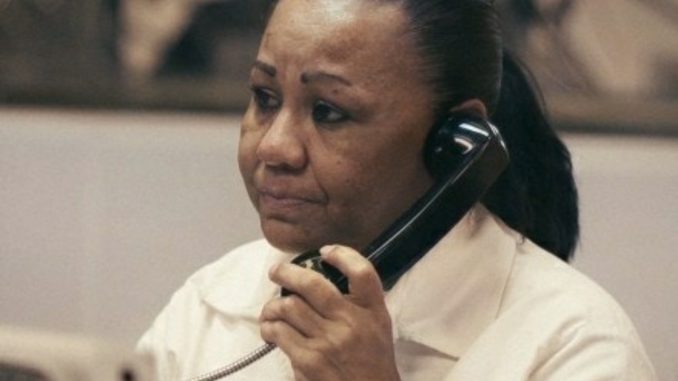
By Liliana Segura and Jordan Smith
March 5, 2022
Dr. Thomas Young is adamant: Melissa Lucio should not be put to death.
“This would be a horrible, horrible tragedy if she ends up getting executed over this,” he said. “It’s just not right.”
Young is a veteran forensic pathologist and the former chief medical examiner in Kansas City, Missouri. For years he has sounded the alarm about forensic science practices that lead to wrongful convictions, with a focus on faulty inferences in death investigations. He said that’s exactly what happened in Lucio’s case.
Lucio has been on Texas’s death row since 2008 for killing her 2-year-old daughter, Mariah. According to the state, Lucio repeatedly abused the toddler until she finally succumbed to her injuries. The problem, says Young, who first reviewed the case at the behest of Lucio’s post-conviction attorney, is that the medical examiner who conducted Mariah’s autopsy, and then offered unequivocal trial testimony that blamed Lucio for her daughter’s death, got it wrong. That pathologist, Young said, appears to have jumped to conclusions while ignoring evidence that pointed toward Mariah’s death being the result of an accident.
“You develop a belief and come hell or high water you’re going to defend your belief,” Young said. This happens all too often in forensic pathology and forensic science in general, he added.
The state’s case against Lucio was weak but ultimately devastating. Instead of conducting an investigation into what happened to Mariah, police in the Rio Grande Valley city of Harlingen hauled Lucio in for a marathon interrogation the night her child died and aggressively pushed her to confess. Jurors at her trial were shown a video of the more than five-hour confrontation and heard from cops who insisted that Lucio wasn’t behaving like a grieving mother. They were also shown numerous photos of Mariah’s body, which was horribly bruised. The pathologist, Dr. Norma Jean Farley, said there was no doubt that Mariah was a battered child.
Meanwhile, the defense failed to call witnesses who could have questioned the state’s assumptions about Mariah’s death or offered an alternative explanation for her injuries.
Farley did not respond to The Intercept’s requests for comment, nor did Peter Gilman, Lucio’s lead attorney at trial.
The case came at a pivotal time for embattled Cameron County District Attorney Armando Villalobos, who used Lucio’s trial to boost his tough-on-crime reputation as part of his reelection campaign. The DA, who would go on to win that November, would be known as the man who sent the first Latina woman to Texas’s death row.
Lucio’s case is an example of the kind of rush to judgment that often follows the untimely death of a child. A parent or caretaker perceived to be unfit can easily turn into a criminal suspect; authorities are especially quick to judge poor people of color — especially women who are stereotyped as bad mothers.
If Mariah died as the result of an accident, as Young believes, that means Lucio, who has always maintained her innocence, is sitting on death row for a crime that never happened. Since 1989, at least 70 women have been exonerated for murders they did not commit, according to the National Registry of Exonerations. In 31 cases, no crime was ever committed; nearly half of those involved child victims.
“This is by far the weakest capital case I’ve ever seen.”
Lucio’s case also reflects how Texas courts routinely ignore evidence of innocence in order to carry out the death penalty. After Lucio’s conviction was overturned by a three-judge panel of the 5th Circuit Court of Appeals, which found that the trial court violated her right to present a complete defense by barring the testimony of two witnesses, prosecutors successfully appealed, convincing the same court to reinstate Lucio’s conviction in 2021. In January, the state set an execution date of April 27.
With Lucio’s execution date approaching, anti-death penalty organizers have joined her family in the Rio Grande Valley in a campaign to save her life. Activists have held public screenings of a 2020 documentary film about Lucio, “The State of Texas vs. Melissa,” which revealed crucial evidence that was never used at trial. Meanwhile, the Innocence Project is calling on the Cameron County district attorney to withdraw Lucio’s execution date and conduct a review of her case. If the efforts are unsuccessful, Lucio will become the seventh woman executed in Texas and the first in nearly a decade.
“I’ve been doing capital defense work in Texas for 30 years now,” said Sandra Babcock, a Cornell Law School professor and founder of the Cornell Center on the Death Penalty Worldwide. “And this is by far the weakest capital case I’ve ever seen.”
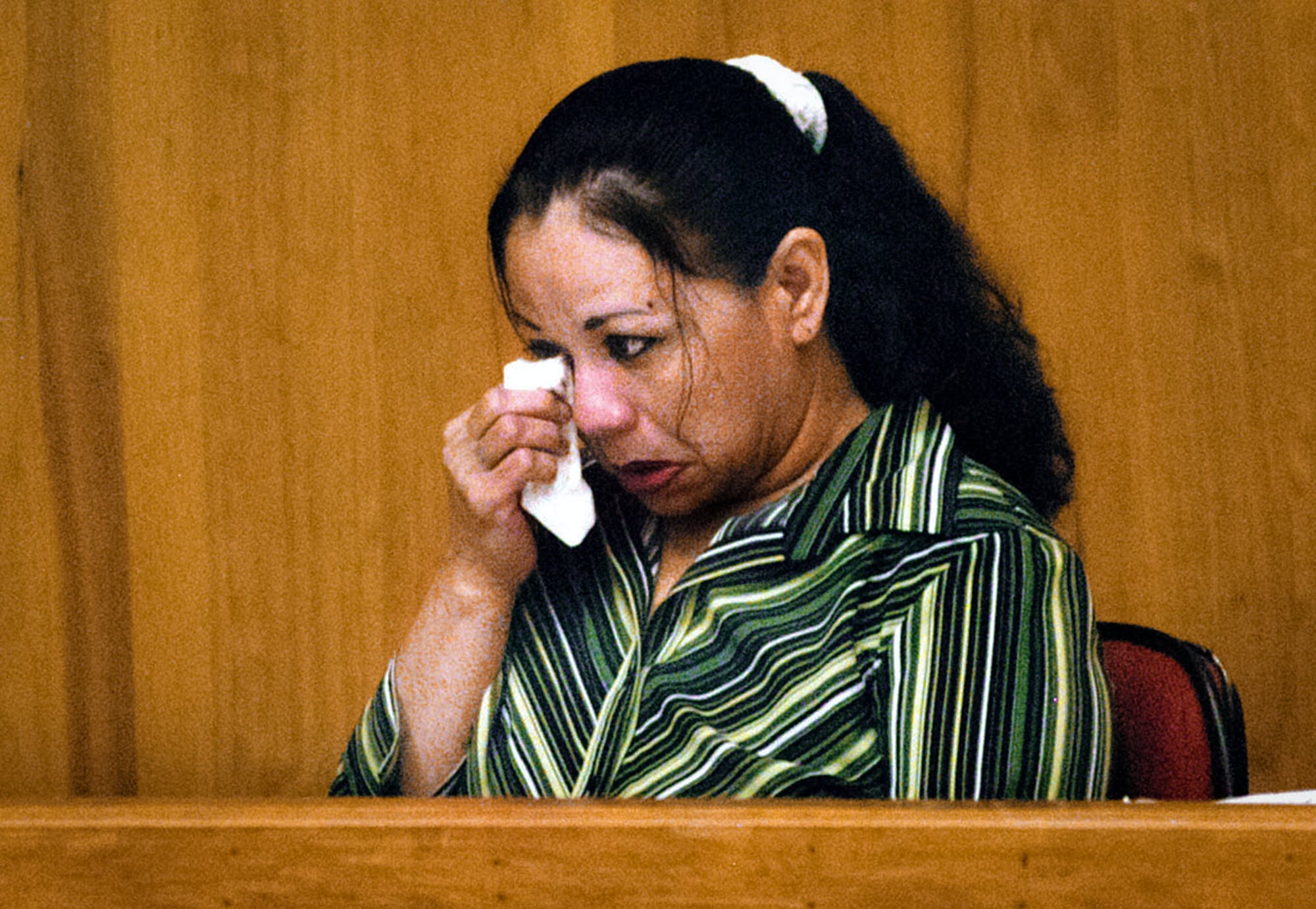
No Third Choice
Like many people who end up on death row, Lucio had a life marked by trauma and abuse. Molested by multiple men when she was just a kid, she longed to get out of her mother’s home. She married at 16 and the next year had her first child. According to court filings, Lucio’s husband was violent toward her; after he abandoned her, she got involved with a man named Robert Alvarez, who was also abusive. By the time Mariah was born in September 2004, Lucio already had 11 children. She was living in poverty and struggling with drug addiction. After she tested positive for cocaine following Mariah’s birth, Texas’s child welfare agency placed her kids in foster care.
Over the next two years, Lucio worked to meet the state’s family reunification plan and regained custody of nine of her children. (The three oldest children went to live with their father, Lucio’s first husband, in Houston.) The family’s caseworker, who visited the home regularly, described a chaotic atmosphere. Lucio’s teenage daughters were often in charge of supervising their siblings. But the caseworker reported no signs that Lucio physically abused her children. In fact, relatives and friends recall her being patient with her kids; one of Lucio’s sisters testified that she used to get exasperated at how passive Lucio was when it came to discipline.
The family was crammed into a two-bedroom apartment in a shabby brick building in Harlingen. Their unit was on the second floor, which required walking up a rickety flight of stairs constructed of varying rise. In one report, the family’s caseworker expressed concern after seeing Mariah’s 3-year-old sister navigating the steps without supervision. For Mariah, who wore special shoes because of a congenital foot deformity, the staircase was particularly hazardous. The family had plans to move to a first-floor apartment in a nicer building just blocks away.
As Lucio later told police, on Thursday, February 15, 2007, she was busy readying the apartment for the move. Alvarez had taken three of the kids to drop off a load of belongings at the new place. Although he’d told the younger kids to stay inside, once he left, they made their way down the staircase to play in the yard, leaving Mariah upstairs. Lucio said she was packing clothes and housewares when she realized that Mariah was no longer inside; she found her lying at the bottom of the staircase crying, with some blood by her lower teeth.
Mariah seemed mostly uninjured by the fall, Lucio said. But over the next 48 hours, there were signs that she apparently failed to appreciate. First, Mariah threw up after eating some tamales; although she ate Cocoa Krispies for breakfast the next day, the child eventually lost her appetite, asking only for juice at dinner. Mariah also appeared to be having some trouble breathing, which Lucio thought was due to a cold. By Saturday, Mariah was lethargic. Now settling into their new apartment, Lucio put the toddler on a mattress in one of the bedrooms, pulled a blanket up over her, and asked the other children to let her sleep. When Alvarez got home early that evening, he checked on Mariah and immediately called for Lucio; Mariah was not breathing.
It was around 7 p.m. when the family called 911. Paramedics arrived and tried to resuscitate Mariah to no avail. They rushed her to the emergency room of a local hospital. She was dead. The first responders and ER doctor were suspicious. Lucio was sitting near Mariah’s head when the paramedics arrived, but she wasn’t doing anything, they reported. She told them that Mariah had fallen down the stairs but not that it had occurred at their previous apartment. They didn’t buy it; the new apartment had just three steps leading up to the front door.
When the paramedics cut off Mariah’s clothes, they were stunned to see a constellation of bruises. The doctor concluded that Mariah had been severely abused. “This is the absolute worst that I’ve ever seen,” he said.
Police took Lucio directly from the hospital to the police station, installed her in a cramped office, set up a video recorder, and just before 10 p.m. began their interrogation.
A tag team of five investigators pressed Lucio, trying to get her to admit that she had killed her daughter. Although one of the Harlingen Police Department investigators, Rebecca Cruz, later testified that at that point the cops had “no evidence” Lucio had harmed Mariah, they told her that they knew Mariah had been beaten to death. “If I beat you half to death like that little child was beat, I bet you’d die too,” investigator Jesus Banda yelled.
Police told her there were only two options: Either she’d abused Mariah but hadn’t intended to kill her or she was a murderer. “There is no third choice here,” one of them said. Maybe she hadn’t meant to do it and was just “frustrated” by all her responsibilities, they suggested. Although Lucio laid out her story about Mariah falling down the stairs, they brushed it aside, claiming that there was no way a fall could have caused her death or the numerous bruises found on her body.
For more than five hours, Lucio sat in a metal office chair wedged into a corner, alternately crying, yawning, and resting her head on the desk as the cops urged her to tell the “truth.” Still, she did not relent, repeatedly telling them that she did not beat Mariah and didn’t know how she’d died. “How are you going to change our minds and prove that you’re not a cold-blooded killer?” one investigator asked.
“I don’t know how to change your minds,” Lucio replied.
Eventually a new face appeared: Texas Ranger Victor Escalon. Part of the state police, the Rangers often assist smaller jurisdictions in the investigation of major crimes. While they have generally enjoyed a larger-than-life mythology in Texas, the Rangers have a history marked by racism and brutality. Wearing his gun in a leather holster and the iconic white cowboy hat that is synonymous with the agency, Escalon leaned in toward Lucio. He was there, it seemed, to turn the screw. “Look at me,” he told her. The truth is hard, but she had to tell him. “It’s gonna help you,” he continued. People would understand.
Lucio cried as he showed her pictures of Mariah’s body. She’d spanked Mariah before, she told Escalon, “but I didn’t think I would spank her to where … it got to this point.” She was responsible, she told him. But when he pressed, she continued to say that she didn’t know how Mariah had died. Had Lucio suffocated her? Poisoned her? Hit her in the head? No, Lucio responded. Escalon brought in a white baby doll dressed in a pink jumper. He placed it facedown on the desk and asked her to show him how she’d spanked Mariah. She thumped the doll on its backside. Escalon slapped his leg harder. Was it like that? He instructed her to hit the doll again. Why’d she do it? he asked. “Frustration, I guess,” Lucio replied.
“What’s going through your head?” Escalon asked just before ending the interrogation at 3:15 a.m. “I wish it was me there and not her,” Lucio replied through tears.
Lucio was arrested and charged with capital murder. That evening, Judge Luis Saenz set her bond at $2 million. She would never go home again.
The following day, Farley, the chief pathologist for Cameron and Hidalgo counties, conducted the autopsy. Cruz, the police interrogator, stood nearby as Farley looked at Mariah’s bruised body. Trial records indicate that before Farley even cut into the body, she’d already made up her mind. “This child was severely abused,” she later testified. “I mean, it would have been evident to a first-year nursing student.” The internal examination would be important, she said, “to figure out which slap, hit, or throw killed the child.”
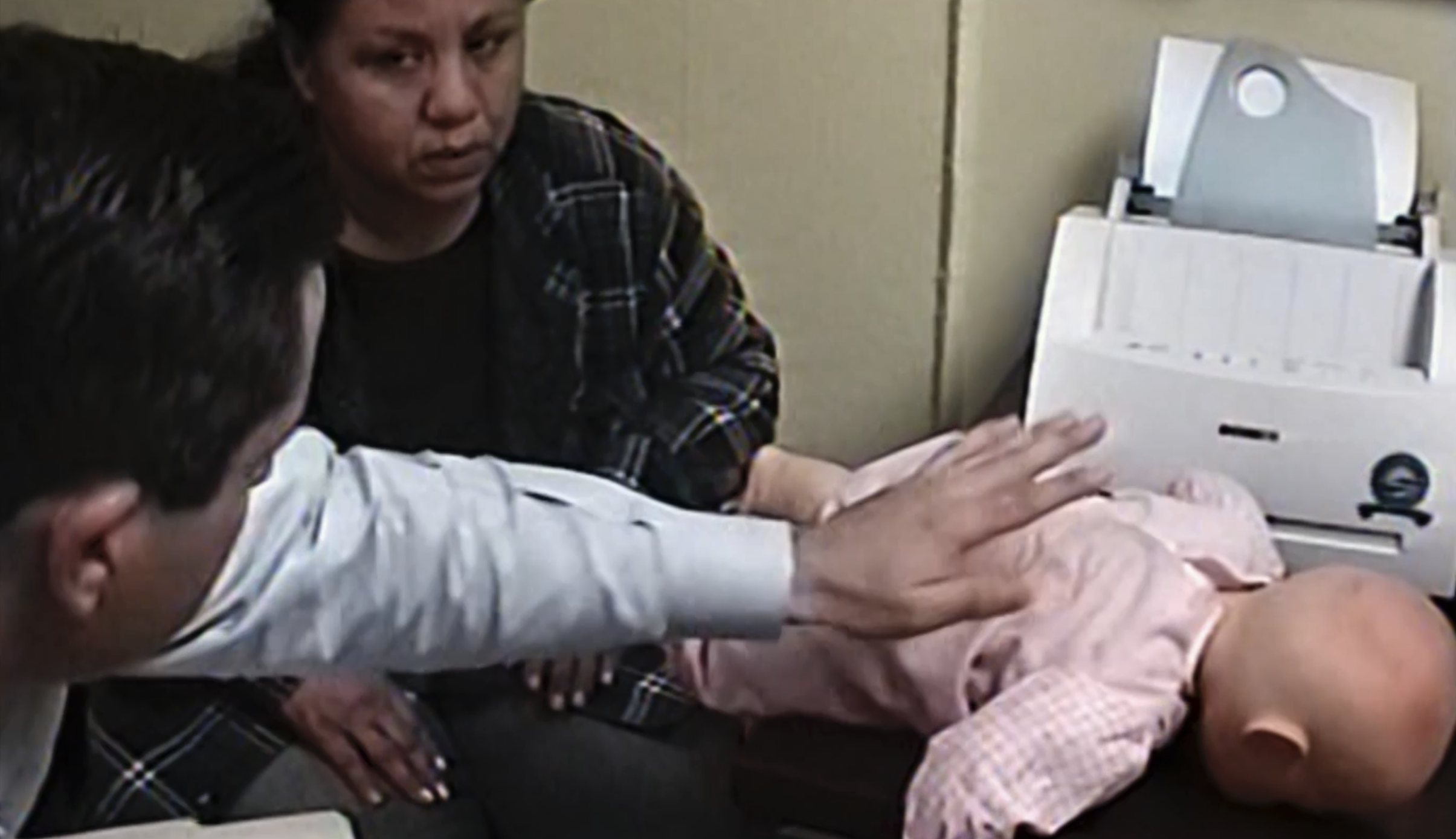
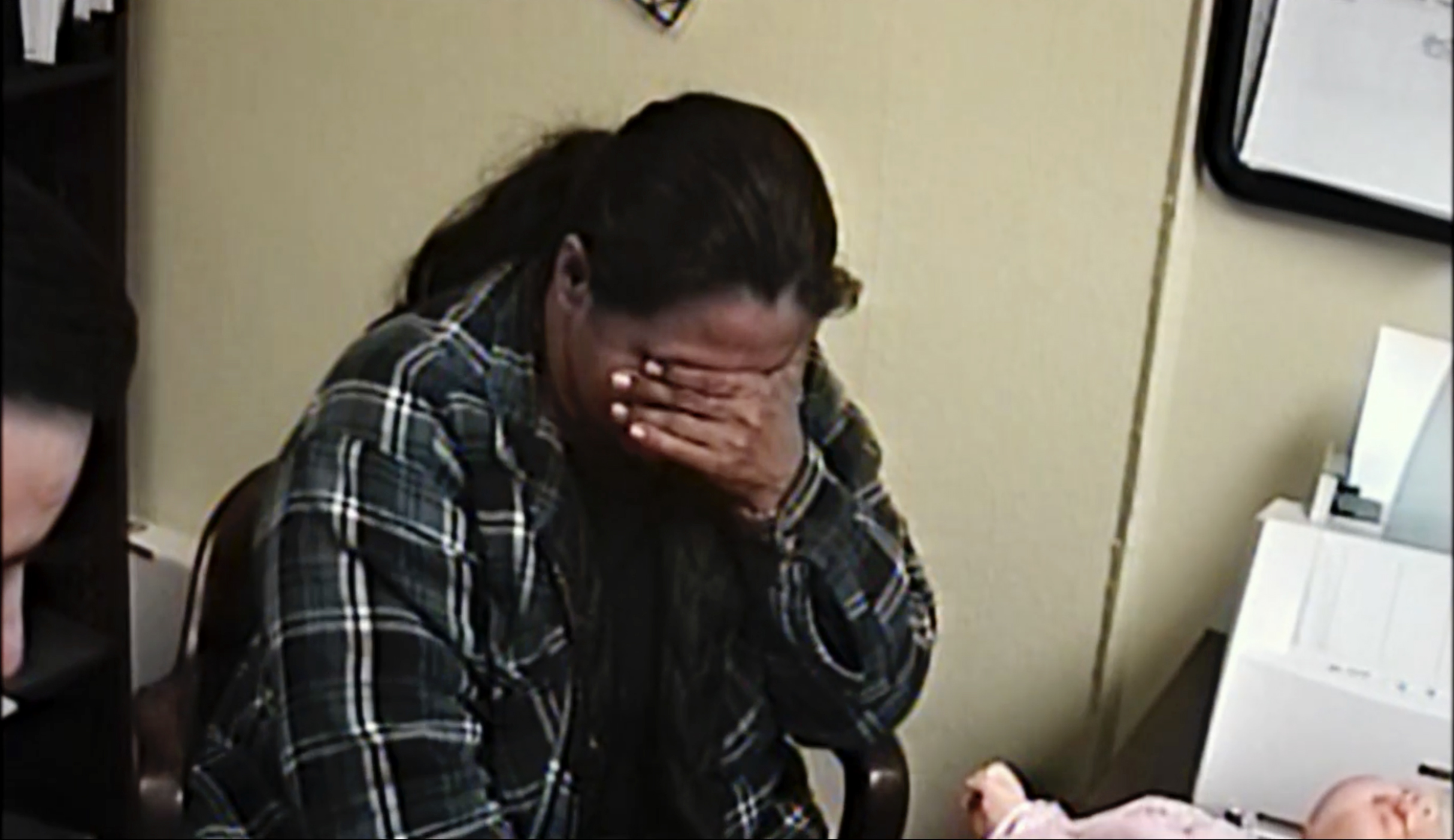
“A Normal Parent”
Lucio went to trial in the summer of 2008 at the Cameron County Courthouse in downtown Brownsville, just a few blocks from the international bridge to Matamoros, Mexico.
The trial came as Villalobos, the Cameron County district attorney, was desperate to rehabilitate his reputation to win reelection. After unseating the incumbent DA amid promises to restore leadership to the office, Villalobos had been accused of corruption following a highly irregular plea deal with a man who’d murdered a woman on South Padre Island. The defendant was allowed 60 days “to get his affairs in order,” only to flee the country; Villalobos’s primary opponent bashed him for the deal while also decrying the DA’s handling of child abuse cases. In a full-page newspaper ad, Villalobos’s rival tallied more than 100 cases from 2007 in which defendants had never been prosecuted. “ARMANDO VILLALOBOS IS AGAINST OUR CHILDREN,” it read.
Representing Lucio was Gilman, a local lawyer who’d previously run for district attorney himself. Gilman was appointed to the case despite never having handled a death penalty trial. Although Texas had undertaken a series of reforms aimed at bolstering the quality of capital defense, large swaths of the state remained ill-equipped to manage the unique burdens of a death penalty prosecution. In Cameron County, the lack of experienced lawyers created lengthy trial delays. As Villalobos told the Valley Morning Star in 2006, “The list of available qualified death penalty attorneys is very short.”
Lucio was in jail for three months before Gilman was appointed to her case. As she describes it in the documentary, he encouraged her to plead guilty in exchange for a 30-year sentence offered by the DA. “And I said no right away because I wasn’t guilty,” Lucio said. To Assistant District Attorney Alfredo Padilla, that decision sealed her fate. “If she was arrogant enough” to think “‘I can explain my way out of it,’” Padilla told the filmmakers, “then she has nobody to blame but herself.”
Padilla gave the opening statement at trial. He avoided the question of precisely how Lucio had killed Mariah by casting the toddler’s death as the violent culmination of “a cruel and brutal life” at the hands of her mother. The vagueness of the state’s theory was reflected in the indictment, which Padilla read aloud. It charged Lucio with causing Mariah’s death “by striking or shaking or throwing” the child using her “hand, foot, or other object.”
The first day of trial was mostly spent playing the video of Lucio’s interrogation, which the state repeatedly called a “confession.” Although the defense pushed back against the label, Gilman conceded in his opening statement that Lucio was guilty of “injury to a child.”
Prosecutors called an array of witnesses who described Lucio as showing insufficient distress over the death of her child. She did not behave like “a normal parent,” one paramedic testified. Another said that “she was extremely calm for the situation,” behavior “so far out of the ordinary that I put it into the report.” Cruz, one of the police investigators, said Lucio looked “relieved” after her daughter’s death. “There was no emotion,” she said.
Escalon, the Texas Ranger, was especially adamant that Lucio’s demeanor told him all he needed to know. From the moment he walked into the interview room, he testified, he knew that “she had done something.” Innocent people fight back, he explained. “They’re going to tell you, ‘Get out of my face. I didn’t do anything. Leave me alone. I want my attorney.’” But Lucio remained slouched over, avoiding eye contact — a classic sign that someone is “hiding the truth.”
At least one juror interviewed by The Intercept drew similar conclusions from Lucio’s flat expression in court. If she were on trial for something she hadn’t done, the juror said, she would have loudly protested: “‘Hey, Judge, I’ve got something to say.’ … Because I’m not about to lose my life over something that I know I did not do.” But Lucio “didn’t seem to care.” The juror, who wished to remain anonymous because she still lives in the community, had “no doubt” about Lucio’s guilt. “A child does not get that beat up just because,” she said. She was especially struck by the photos of Mariah’s bruised body. “That was the most difficult part for us to see. And to get that image out of your head.”
When it came to how, exactly, Mariah might have sustained such bruises, however, the state’s case was nonexistent. There were no witnesses who ever saw Lucio strike her child. Nor did any of the voluminous child welfare records document any past physical abuse. Yet state witnesses speculated freely about the many ways Lucio might have brutalized her daughter. At one point, after Escalon testified that Mariah might have been violently shaken, Villalobos asked him to demonstrate, which Escalon did, shaking the district attorney by his shoulders. The child was so frail that it would not have taken much for her to “fall apart,” Escalon said.
But the most crucial testimony came from Farley, the medical examiner. A seasoned trial witness, she apologized to the court reporter for talking too fast. “I get in trouble for that all the time,” she said. After a lengthy discussion of Mariah’s external injuries, Farley turned to the autopsy. It had taken six hours, she said, which was longer than most, “because of the number of contusions and abrasions on the body.” Contusions “don’t normally kill you,” she explained, but they are “a sign that a child has been beaten.” In addition to the external bruises, Farley said she found contusions to Mariah’s lungs and kidneys, which were consistent with “punches or stomps — or slams.” She also noted an older, partially healed fracture in Mariah’s arm, which “just gives us more evidence of a battered child syndrome.”
Farley explained that the cause of death was a blow to the head that had caused a subdural hemorrhage, in which blood fills the space between the brain and the skull. Such injuries required significant force, she said, although her explanation remained vague. “Basically the head is going one direction and it hits something,” she said, referring to the brain. “And when it stops, it bounces off of it. And it’s that force that causes this kind of injury to a child.”
Farley estimated that Mariah’s head injury had occurred 24 hours before her death, on Friday, February 16. Could a child with such an injury be able to “sit up, eat Cocoa Krisps, and things of that nature?” Padilla asked, referencing the cereal Lucio said her daughter ate the morning after she fell down the stairs. No, Farley said. “Usually with this kind of hemorrhage, the child has some type of immediate sign,” she said. “Most of the time, they say they’re very tired.” But as the brain swells, they will also vomit or have respiratory issues. “It’s usually fairly quickly after the fatal blow occurs that they’ll start to have the symptoms.”
The symptoms Farley listed were consistent with what Lucio had described in the 48 hours after Mariah fell down the stairs. But Farley rejected the notion that Mariah could have died from a fall. “This child had more bruises than I’ve ever seen in any case that I had before,” she said. “This is a beating.”
On July 8, 2008, Lucio was convicted of capital murder. Two days later she was sentenced to die.
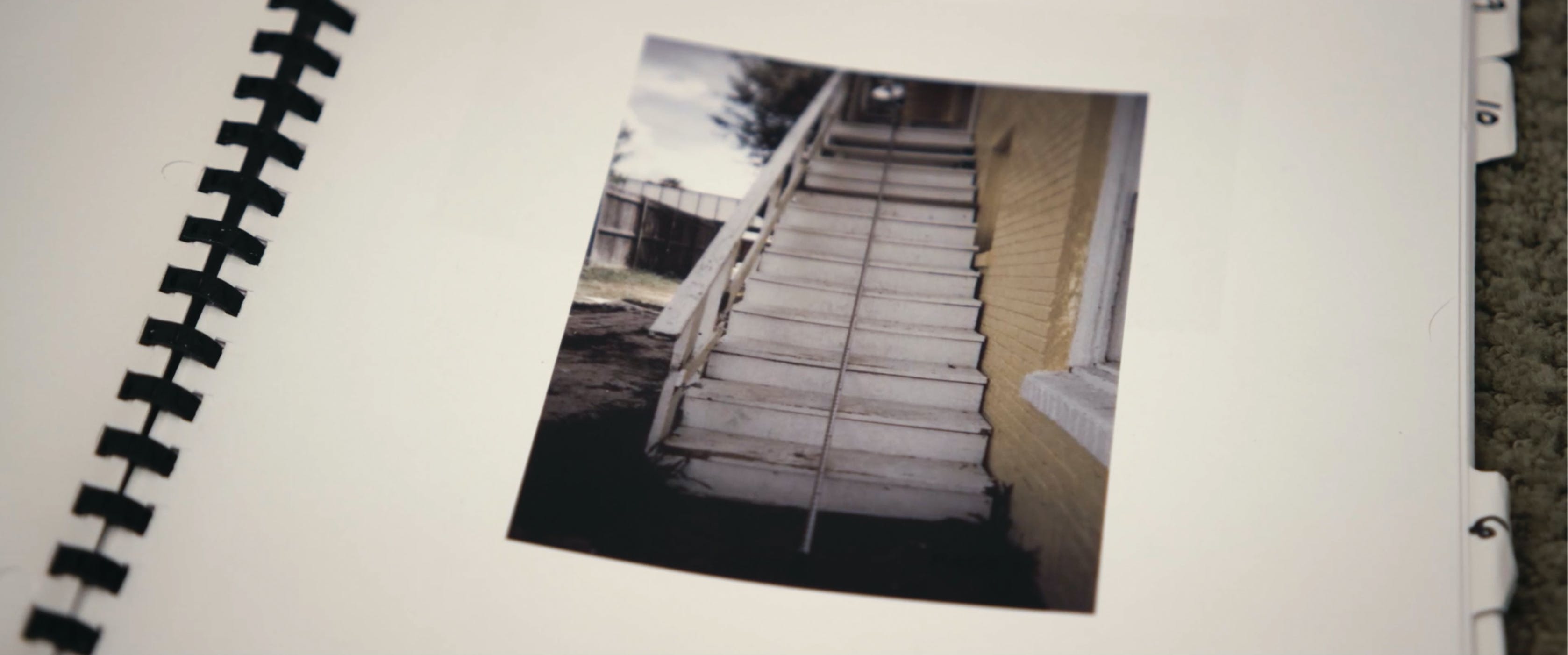
Discarded Evidence
Lucio had been on death row for almost four years when the Texas Court of Criminal Appeals threw out the death sentence of a different Cameron County defendant who had been convicted of killing his girlfriend’s 1-year-old son. Manuel Velez, a construction worker with an intellectual disability, was sentenced to death just months after Lucio.
As in Lucio’s case, Farley was the state’s star witness against Velez; she testified that the child had died after being “struck, thrown against a surface, or beat about the head.” Especially crucial was her insistence that the child’s fatal injury had been sustained no earlier than two weeks before his death. But according to evidence that later came to light, the fatal injury had occurred between 18 and 36 days prior to the child’s death, a period during which Velez was working a job in Tennessee, more than 1,000 miles away.
In fact, Farley had been provided medical records that showed the child had a history of head injuries dating back months. But these documents were apparently ignored, one of several parallels with Lucio’s case. “She never looked at Mariah’s medical records,” said Vanessa Potkin, director of special litigation at the Innocence Project. “There was never a consideration of any medical history, which included other falls.”
It would be another two years before Velez was released from prison. In the meantime, appellate lawyers for Lucio became convinced that she too had been wrongly convicted. In 2010, Margaret Schmucker was appointed to represent Lucio in her state post-conviction proceedings. It was immediately clear to her that there were profound problems with the case.
Some of the most disturbing revelations came from a mitigation specialist at trial named Norma Villanueva. In 2011, she signed a five-page affidavit saying that Gilman, Lucio’s defense attorney, had deliberately hamstrung her efforts. He’d barred her from speaking to Lucio’s family — the most crucial part of mitigation work — until jury selection began, which was far too late to compile the thorough research her job required. Even more unsettling, she said that Gilman had refused to pursue exculpatory evidence that could have saved his client’s life.
According to Villanueva, one of Lucio’s teenage daughters, Alexandra, had admitted during a family meeting in June 2008 that she “was the reason Mariah fell down the stairs.” This was potentially powerful evidence. Yet according to Villanueva, “this information was simply disregarded and never utilized in any manner.” In fact, she said she was told by Gilman “not to disclose this information to anyone.”
The possibility that the teenager might have been responsible for Mariah’s injuries was explored in the documentary about Lucio’s case. One private investigator hired by Schmucker told the filmmakers that when she’d confronted Gilman about his refusal to pursue the evidence, he said he didn’t want to ruin the teenager’s life. Although in the film Alexandra denied ever harming Mariah, others have corroborated Villanueva’s account. In a 2010 affidavit, one of Lucio’s sisters recounted a different conversation involving several relatives in which Alexandra had tearfully admitted to punching Mariah, evidently out of resentment for having to care for her while Lucio and her husband did drugs.
To the juror, who watched the film shortly after it came out, this alternate theory was unconvincing. “If it was true that the daughter is the one that pushed her, how come she never made mention of it?” the juror asked. Gilman, after all, told jurors at the start of the trial that Lucio was guilty of “injury to a child.” The juror said she was stunned upon watching the film to discover that Lucio insisted on her innocence at all.
With so many kids around, someone would have seen it if Mariah fell down the stairs, the juror pointed out. Indeed, the film includes clips of interviews conducted at Maggie’s House, a child welfare center in Cameron County, where a counselor spoke to two of Lucio’s sons a few days after Mariah died. “She fell down some steps,” 9-year-old Rene said when asked if anything had happened to his little sister. Did somebody tell him that’s what happened? “No, I saw,” he answered. His brother Richard told the same counselor that he had not seen any bruises on Mariah aside from the ones she got “when she fell down the steps.”
The children’s accounts could have provided key corroborating evidence for the theory. But in his own interview for the film, Gilman was dismissive. “I didn’t feel like any of the children would be helpful,” he said, citing their behavioral problems. He doubted whether they could have appeared in court “without getting up and running around the courtroom thinking, ‘This is great.’”
Immediately following Lucio’s trial, Gilman was hired as a prosecutor in the Cameron County District Attorney’s Office, where he works to this day.
Meanwhile, Villalobos, the former DA, is due to be released from federal custody in 2025 after being convicted on a slew of corruption charges. Five years after Villalobos sent Lucio to death row, jurors found him guilty of accepting more than $100,000 in exchange for “favorable acts of prosecutorial discretion.” In an interview with the documentary filmmakers, one of the prosecutors who tried the case cited Villalobos’s work on other capital cases as a cause for concern. “Every single one of those cases should be examined,” he said.
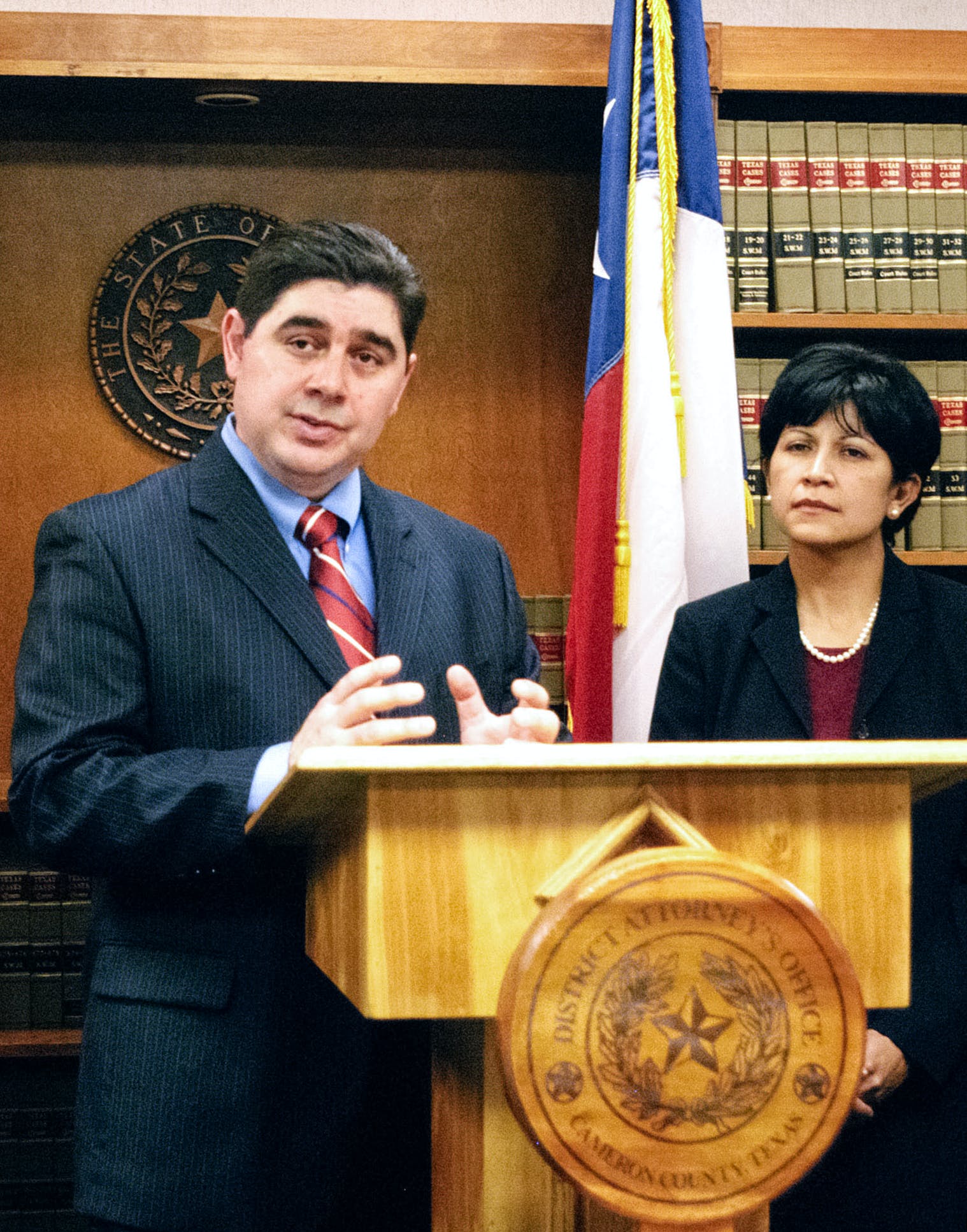
Room for Bias
Despite the red flags, Lucio’s case has mostly evaded careful scrutiny. While the 5th Circuit briefly overturned her conviction, the courts have all but ignored the alleged evidence that sent her to death row: Farley’s autopsy and the police interrogation. And that evidence, experts say, was wholly unreliable.
Young, the forensic pathologist, was first asked by Schmucker to review the medical evidence against Lucio as part of her state post-conviction appeal. In a December 2010 report, Young concluded that the child’s cause of death was “blunt head injury, delayed effects” and that the manner of death was an accident. More than 11 years after submitting those findings, Young does not mince words: Farley’s conclusion that Mariah’s death was caused by abuse was pure guesswork. “Everything that Dr. Farley is doing here is nonsensical.”
According to court records, Farley looked at Mariah’s body, decided that she’d been abused, and then conducted an examination confirming her assumption. But there was no history of Mariah being physically abused by her mother, including in the extensive records compiled by the state child welfare agency. “That is critical,” Young said. “Nobody saw child abuse.” Moreover, other members of the family saw Mariah at the bottom of the stairs, told authorities that she’d fallen, and watched her condition deteriorate over the next two days. “They were … there to see this happen to the child,” he said.
The better approach would have been to conduct the autopsy and then consider whether the family’s account of what happened was consistent with the medical evidence, Young said. “Is there a scientific explanation for that?”
In Mariah’s case, he said, there is a condition that could readily explain the toddler’s demise and much of the trauma identified by Farley at the autopsy: a swelling of the brain known as malignant cerebral edema, which has been documented in medical literature for decades. “It’s not entirely clear why this happens, but it does happen to children who have head trauma, even a relatively minor type of head trauma,” he said. “They can develop this reactive brain swelling.”
Left untreated, the condition can have devastating, cascading effects that, contrary to Farley’s testimony, can develop over several days. The brain trauma and subsequent swelling lead to poor blood circulation. “There isn’t sufficient oxygenated blood getting to the brain,” which in turn causes tissue damage, Young said. What follows is a serious blood-clotting disorder known as disseminated intravascular coagulopathy, which can cause bruising anywhere — including on the internal organs. “As a result, any kind of minor handling of the child, the child will develop bruises,” he said.
Beyond the autopsy, there were problems with the way Lucio was questioned by police, which included a host of techniques seen in false confessions, said Fabiana Alceste, an assistant professor of psychology at Butler University who studies interrogations.
Lucio’s behavior “was completely consistent with what we know about victims of trauma.”
The interrogation went on for hours. Meanwhile, Lucio was sleep-deprived, she hadn’t eaten all day, and she was pregnant with twins. She also had a history of being abused and was dealing with the death of her daughter — situational and dispositional factors that would leave her vulnerable to police manipulation. “That’s all happening already as she stepped into the interrogation room,” Alceste said. “She’s not coming into this a blank slate. She’s already in the midst of trauma.”
Indeed, while the cops homed in on Lucio’s demeanor as indicative of her guilt, the physical cues they pointed to as evidence have been debunked by science. Contrary to the narrative presented by the state at trial, Lucio’s behavior “was completely consistent with what we know about victims of trauma, the kind of numbing and dissociation … that is present in virtually every case of every woman sentenced to death, because like Melissa, many of them are victims of severe, repeated trauma,” said Babcock, the Cornell law professor who specializes in capital defense.
Then there are the tactics the police used in their interrogation. The investigators employed a so-called maximization strategy “aimed to increase the suspect’s anxiety, and especially their anxiety related to denying involvement or guilt,” Alceste said — for example, telling Lucio that they knew Mariah had been abused. “They repeatedly block her objections and her denials and tell her that it’s not possible that there are other explanations.”
On the flip side, the interrogators also deployed “minimization” techniques, communicating “that there may be some moral excuse for having committed this crime” and that if the suspect “acquiesces and confesses to what the interrogators are saying, that they’re going to somehow be treated with more leniency,” she said. “It’s all over Melissa’s interrogation,” including in the suggestion that Lucio hurt Mariah because she was frustrated by having to take care of so many kids. In fact, Alceste noted, it was the interrogators who first suggested the idea of frustration, which Lucio later parroted back to them.
Combining these techniques compounds the risk of a false confession. In Lucio’s case, the interrogators pushed her into a corner with no real option but to confess — to something. “That’s the only control that you have in the situation, and it’s not a true choice,” Alceste said. “They’re telling you if you confess to this being an accident or frustration or something that the jury is going to find sympathetic or understandable, that’s better for you. And if you don’t, then you’re a cold-blooded murderer, and that’s going to be worse for you. … That is literally what coercion is.”
There is at least one additional problem with the case against Lucio: The interrogation and Lucio’s admission that she had abused Mariah occurred before Farley conducted her autopsy. And then Farley performed that autopsy with one of Lucio’s interrogators, Cruz, in the room. “The confession coming before the forensic analysis is extremely problematic,” Alceste said. “Confessions tend to color how forensic analysts view the information that they’re supposed to be analyzing objectively.”
A recent study demonstrated that death investigators’ judgments about a child’s manner of death — say, homicide versus accident — can be biased when they’re exposed to nonmedical information like the relationship of a caregiver to the child. Stereotypes about race, gender, and age can unduly influence manner-of-death decisions, the research revealed.
“The average person doesn’t realize that manner-of-death opinions are nonscientific in the sense that they aren’t decisive,” said Jeff Kukucka, one of the study’s co-authors and an expert in confirmation bias in forensics. “There’s a lot of subjectivity involved; the same injury can often be interpreted in different ways, which creates room for bias.” For example, “if the child of an affluent white mother had the exact same injuries,” he said, “those injuries may very well be interpreted as an accident rather than abuse.”
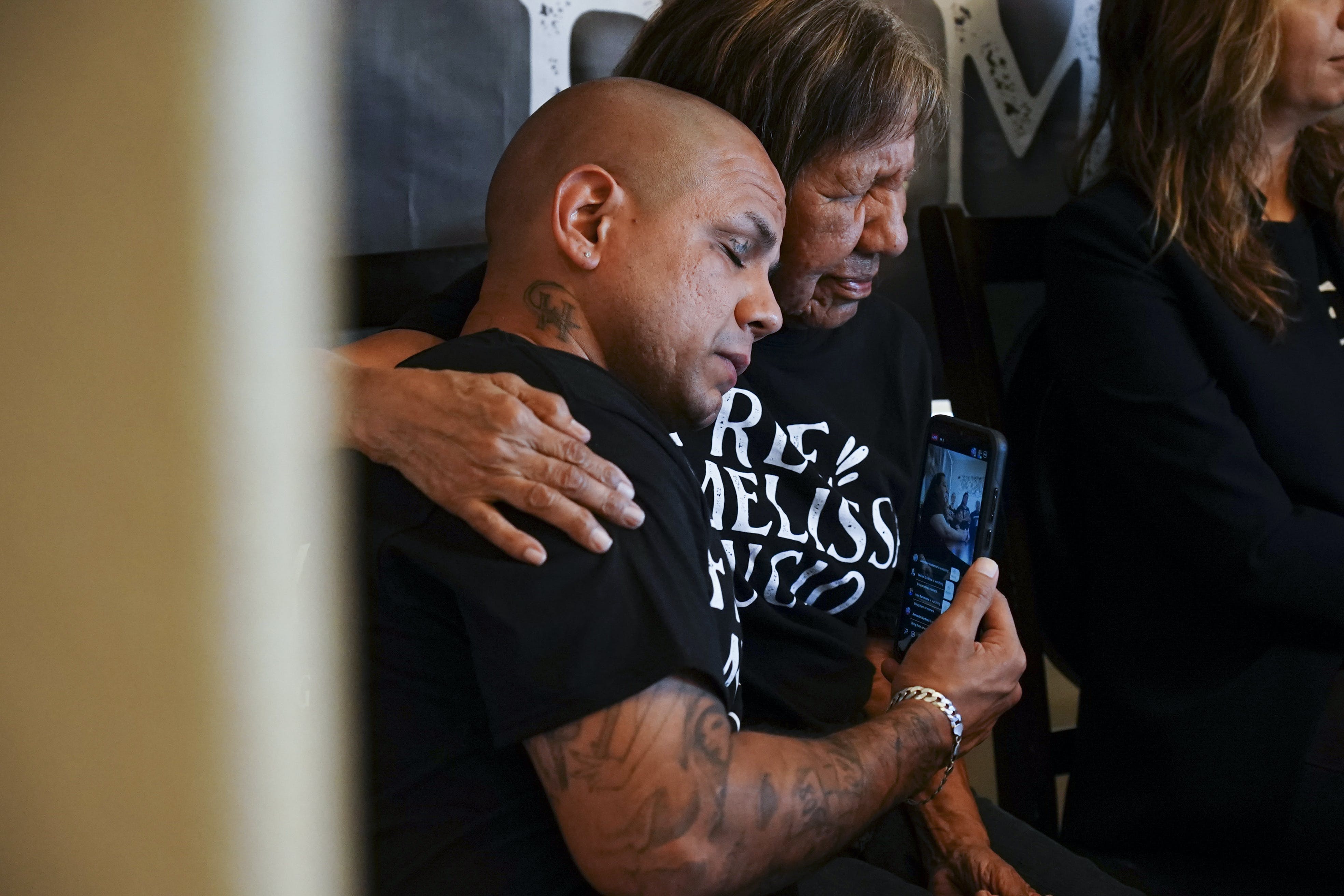
Lost Time
John Lucio was in the car with his wife in January when he got a text message from a relative; it included a screenshot of a media report saying that an execution date had been set for Melissa. That’s how he found out that Texas intended to kill his mother on April 27.
John had only just started visiting his mom on death row after years of his own incarceration. The conditions of his release prevented him from going to see her right away. But after she got an execution date, he began making the eight-hour trip every weekend from Harlingen to the Gatesville Correctional Facility, home to women’s death row.
On January 22, John joined a Zoom meeting from the passenger’s seat of his car. With his wife driving, he held up his phone as the prison complex receded in the distance. He looked drained. It was his first visit with his mother since she’d been given a date. “This one really broke all three of us,” he said. Authorities told him that the closer her date got, the more time they would get together, which was cold comfort. “She’s scared,” he said. “She just wants to be home with us, with her family.”
The call was organized by Death Penalty Action. Attendees included veteran abolitionists and family members of other people on death row. The group provided important moral support for John, who was being inundated by messages from his large extended family. “Everybody’s in pain about this situation,” he said. They wanted to help but didn’t know how. “They love my mother. They know who she is.”
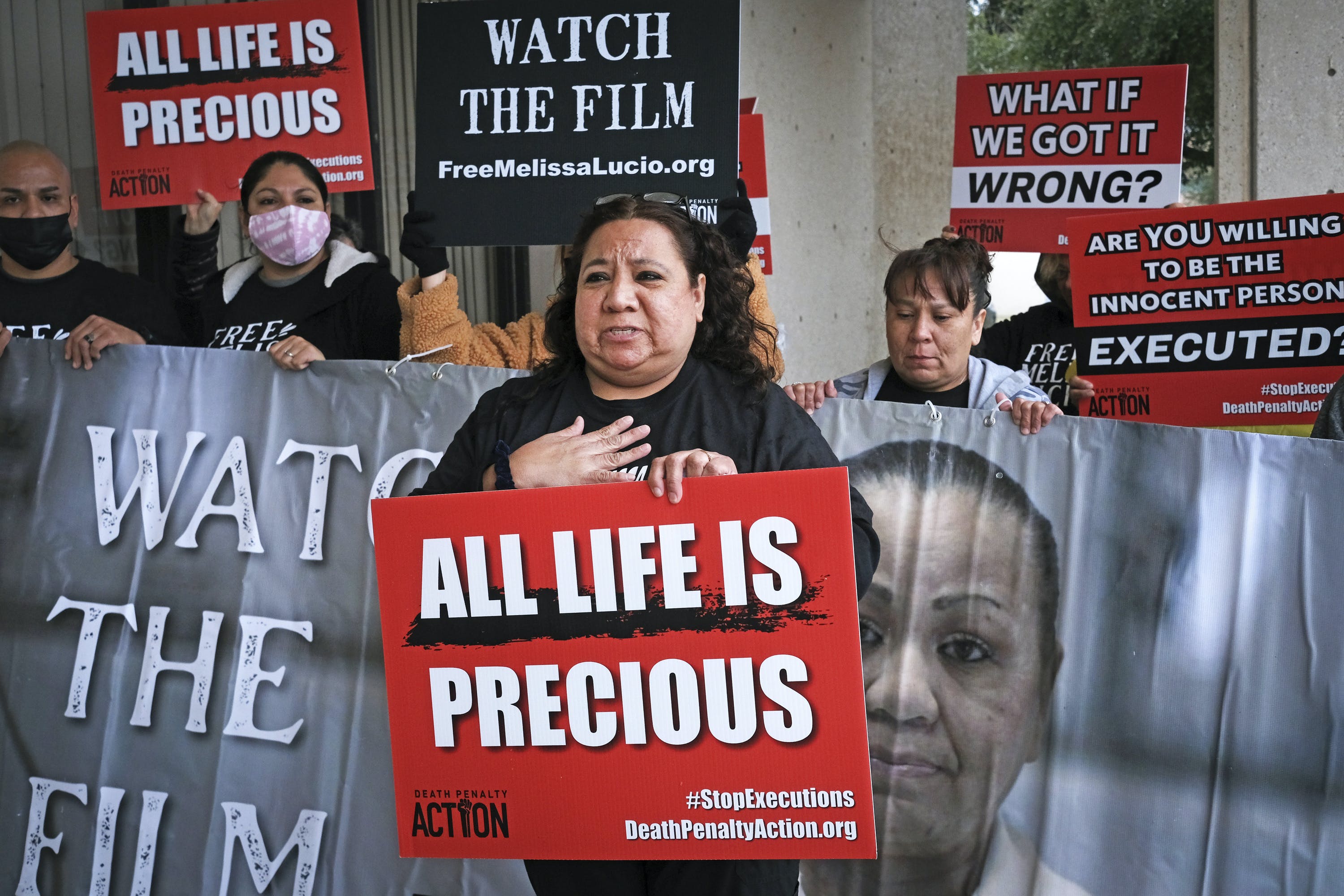
In early February, the anti-death penalty organizers joined Lucio’s family in Harlingen for a flurry of in-person events. A family friend organized a booth at a farmers market downtown; locals signed petitions and bought T-shirts that read “Free Melissa Lucio.” Activists gathered at the Cameron County Courthouse for a rally and delivered petitions to District Attorney Luis Saenz, the former judge who set Lucio’s $2 million bond in 2007. He had requested the execution date.
On February 8, Texas Gov. Greg Abbott traveled to Harlingen for a private campaign event at a local barbecue joint. Lucio’s loved ones gathered in the parking lot. Inside the event, a family member managed to hand the governor a letter. “Our request to Gov. Abbott, everyone in Cameron County, and in the state of Texas is simple,” John said. “Watch the film, and then ask yourself if there is any doubt in your mind about my mom’s guilt.”
Most recently, the activists took their campaign outside the Rio Grande Valley, organizing film screenings in 10 cities across the state. Sabrina Van Tassel, who directed “The State of Texas vs. Melissa,” traveled from France for the tour, which culminated in a rally at the Texas Capitol in Austin. Lucio’s mother, Esperanza, was there along with John and other family members.
Standing behind a massive banner with her sister’s face on it, Sonya Valencia Alvarez took the mic. For years she had been one of Lucio’s most stalwart supporters, the sole family member to take the stand at her trial. In 2017, she showed Van Tassel the staircase in Harlingen where Mariah had fallen. Now she was having anguished conversations with Lucio about how to handle the logistics around her possible execution.
“My sister’s not the murderer that Cameron County said she is,” Alvarez said, speaking softly at first. “My sister is a loving mom.” Yes, she’d been poor and yes, she’d used drugs. “But Melissa loved her children tremendously.”
Her voice got louder, then broke. “We are tired, we are exhausted. We’re hurting, we’re broken,” she said. “Y’all stole 15 years, Mr. Villalobos,” she continued, her voice rising further. “You tore our family apart.”
There was still time to stop the execution. “Mr. Saenz, do the right thing. Do the right thing.”
* This article was automatically syndicated and expanded from The Intercept.

Leave a Reply